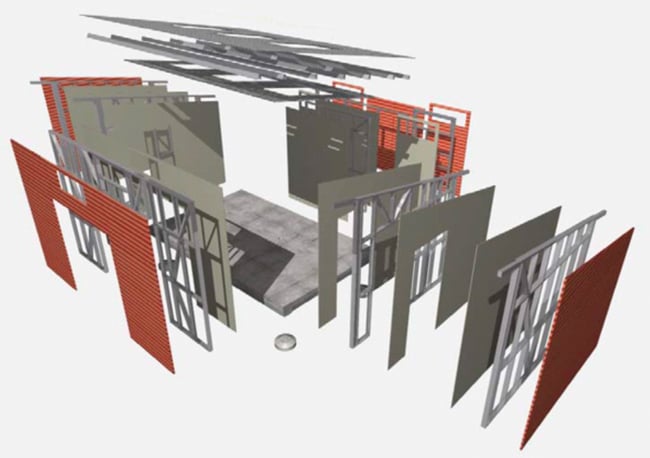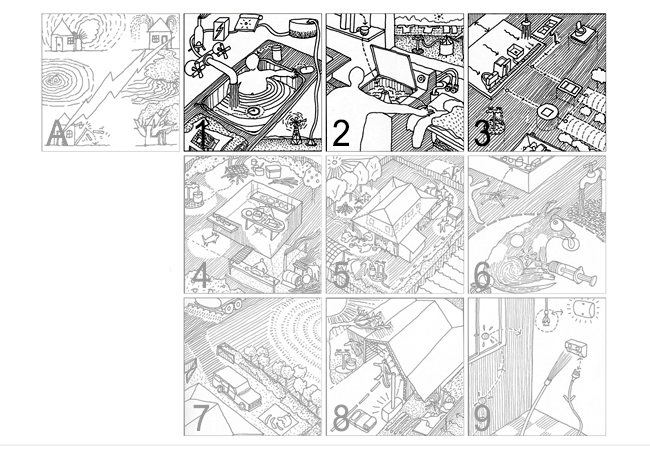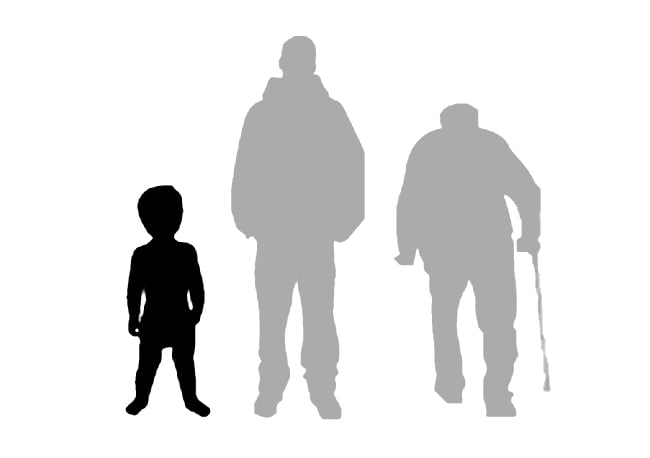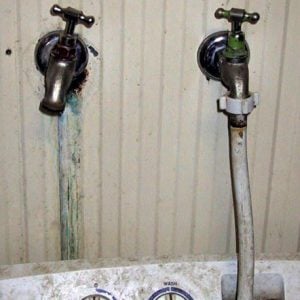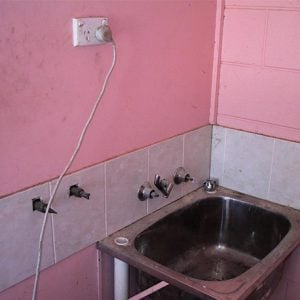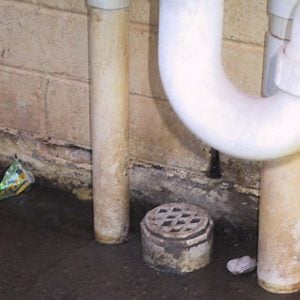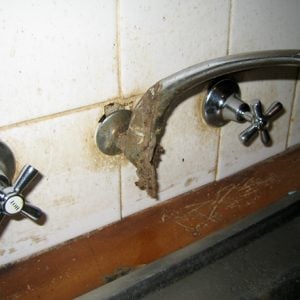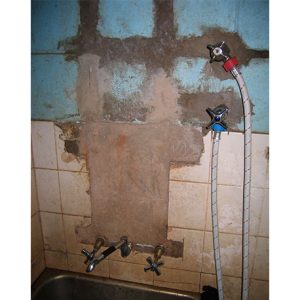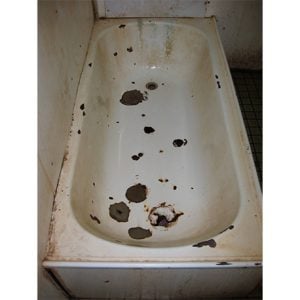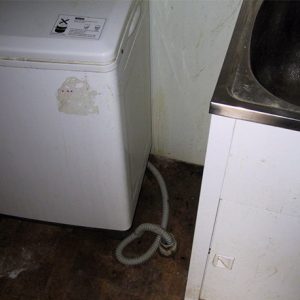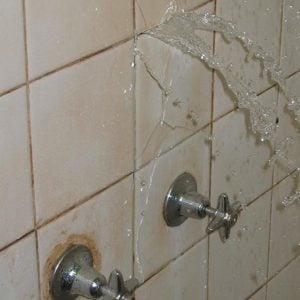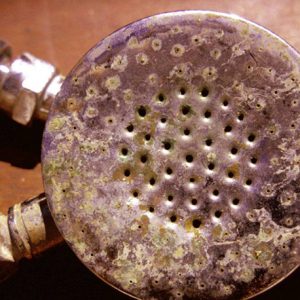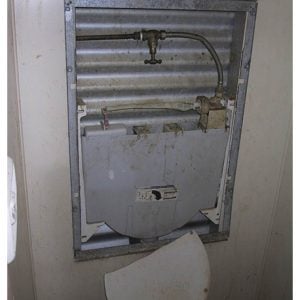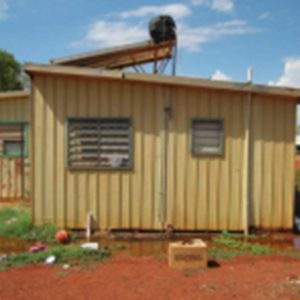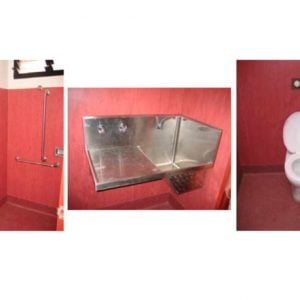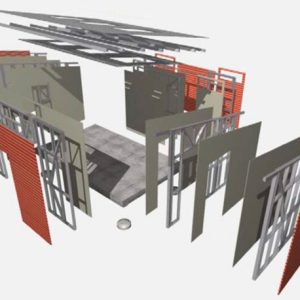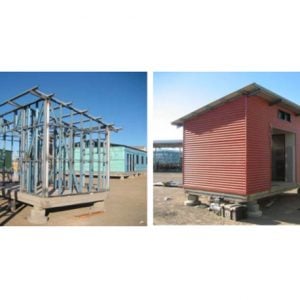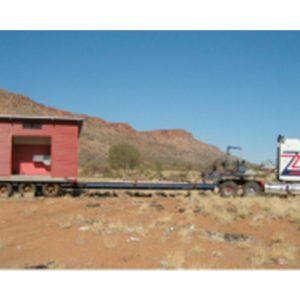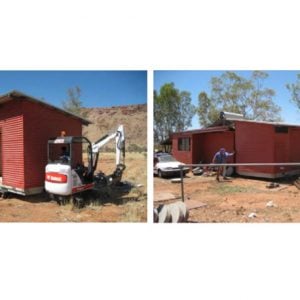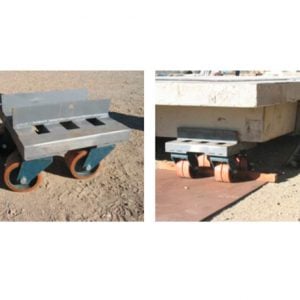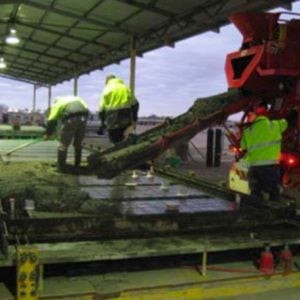Research and Development
Pre-fab Shower, Laundry & Toilet Block
Project Details Better Shower, Laundry and toilets
- Introduction
- The Problem
- The Solution
- Trial projects
- Where to next?
- From Housing for Health - the Guide
Introduction
Four of the 9 Healthy Living Practices (HLPs) directly involve the wet areas (bathroom / shower/ and laundry). These are washing people, washing clothes, removing wastewater safely, and reducing hazards that cause trauma. The wet areas also contain the highest concentration of health hardware (fixtures and fittings) necessary in maintaining these HLPs. Data collected from more than 9,300+ houses under the Housing for Health Survey/ Fix Program illustrate the consistent high level of failure in this hardware. The cause for a significant percentage of these failures is due to poor design / specification or fabrication / installation. This project aims to research, design and prototype a prefabricated modular wet area to address these common failures.
Designing for Better Health
This project developed and tested a shower, laundry and toilet area including HWS, rainwater storage and filter for drinking water supply and
monitoring equipment for power and water.
Conceived as a prefabricated transportable unit for attachment to existing houses, thereby reducing costs, increasing quality and allowing reuse of existing bathroom, shower and toilet areas for bedrooms, study areas or storage.
The Problem
Examples of failure of health hardware in wet areas.
The Solution
The design of the bathroom unit acknowledges
- Existing data on the poor performance of these facilities nationally
- Detailed NIHG data
- The high cost and trade rich nature of the facilities
- Difficulties in transportation and final attachment of the unit to an existing house
- Connection issues with existing houses
- Connection to existing power water and waste services
- Corrosion of bathroom floor and wall structure so commonly seen with steel and timber floor construction
- Desert and tropical variations in environmental conditions (salt, water quality, pests, temperature)
- Ease of access for ongoing maintenance
Key factors considered in the development of the design include the following:
- Documentation
- Robust material selection and construction detailing
- Durable internal waterproofing system
- Fixtures and fittings that are appropriate to use and water conditions
Fabrication
- Employ construction systems readily available to the industry to promote widespread production across Australia
- Prefabricate in ‘factory’ conditions where quality control and supervision of production can be ensured
- Achieve economies of scale possible under ‘factory’ type conditions
- Installing prefabricated units to houses to minimise disruption to occupants
Transport
- Capable of being transported to locations across Australia and basic access conditions
- Dimensions of units to allow ease of transport and multiple units per load
- Ability to manoeuvre/place units into place where access is not possible (craning may not be not an option or expensive in remote locations)
Installation
- Unit form and detail to accommodate connection to a wide and varying range of existing houses
- Standard connection detailing for all types of house configurations
- Opportunities to retrofit redundant wet areas for alternative uses
Trial projects
A desert unit was designed, built and tested in Alice Springs. The tropical unit was built in Darwin.Testing included
- Water and power monitoring
- Hot water monitoring
- Discussions with the householders
- Discussions with maintenance staff
- Making several changes during construction to improve quality without increasing costs
- Detailed financial modeling using the builder and quantity surveyor both with extensive experience in remote area work
An existing house with a poor non-functioning wet area, with a large houses population was selected. The new wet area unit could be located immediately outside the existing bathroom.
The existing bathroom was to be gutted and walls removed to enlarge the sitting area in the house. A new door way was to be installed through to new wet area unit.
Delivery to site was by low-loader transport. The site of the existing house provided adequate space for possible delivery of the unit to it final location. To demonstrate alternative options for
placing (i.e. where space, obstacles or terrain does not allow truck access) the contractor was instructed to deliver on trolleys previously tested in their yard.
Services were connected and completed with the occupants able to use the unit within 24 hours of arriving on site.
Conclusions that can be made from the wet area unit developed under this program:
- Building is a compact plan form suited to function and transport and placement
- Building envelope allows for easy connection to a large range of different house types and demonstrated in Larapinta proto-type installation
- Pre-cast pre-stressed concrete slab will provide durable sub-floor construction
- Construction system /detailing to provide robust, durable and sustainable building envelope can be sourced from current industry technologies and supplies and constructed by ‘capable’ builders
- Fixtures and fittings are chosen on past performance and/or recognized characteristics to provide long-term service. Performance monitoring in place to confirm selection
- Fixtures and fittings are all readily available from existing building suppliers
- Quality control over construction in ‘yard’ is significantly improved
- Cost of production in ‘yard’ and delivery to site and connection demonstrated to be competitive across a range of communities and varying supply numbers
- Unit transport and connection detail demonstrated as being cost effective
- Economies of scale demonstrated to be achievable in ‘factory’ type conditions in ‘yard
Where to next?
For information for architects, designers, students, communities, housing managers go to :
From Housing for Health - the Guide
B1 Washing people
Poor hygiene increases the transmission of diseases, including diarrhoeal disease, respiratory disease, hepatitis and infections. The rates of these diseases in some Indigenous communities are as high as in many developing countries and are many times higher than for non-Indigenous children.
Diarrhoeal and respiratory diseases, in particular, are the major causes of illness among Indigenous children and also play a major role in malnutrition in the first three years of life. Skin infection is one of the most common problems of Indigenous children and causes chronic illness and discomfort. Recurrent or persistent skin infection is known to increase the risk of developing kidney disease and rheumatic fever.
Learn More

